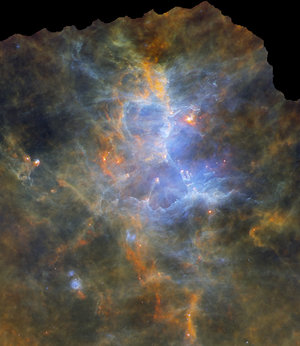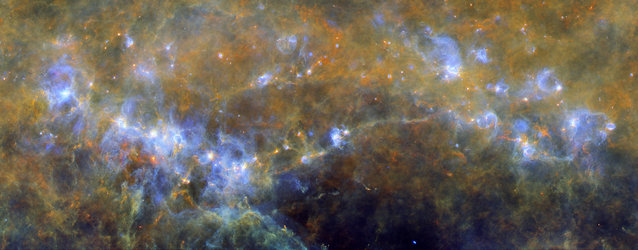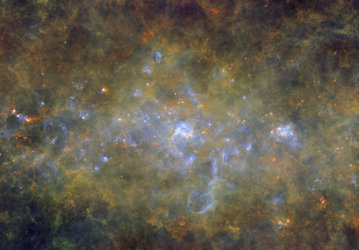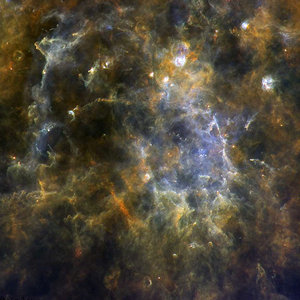Accept all cookies Accept only essential cookies See our Cookie Notice

About ESA
The European Space Agency (ESA) is Europe’s gateway to space. Its mission is to shape the development of Europe’s space capability and ensure that investment in space continues to deliver benefits to the citizens of Europe and the world.
Highlights
ESA - United space in Europe
This is ESA ESA facts Member States & Cooperating States Funding Director General Top management For Member State Delegations European vision European Space Policy ESA & EU Space Councils Responsibility & Sustainability Annual Report Calendar of meetings Corporate newsEstablishments & sites
ESA Headquarters ESA ESTEC ESA ESOC ESA ESRIN ESA EAC ESA ESAC Europe's Spaceport ESA ESEC ESA ECSAT Brussels Office Washington OfficeWorking with ESA
Business with ESA ESA Commercialisation Gateway Law at ESA Careers Cyber resilience at ESA IT at ESA Newsroom Partnerships Merchandising Licence Education Open Space Innovation Platform Integrity and Reporting Administrative Tribunal Health and SafetyMore about ESA
History ESA Historical Archives Exhibitions Publications Art & Culture ESA Merchandise Kids Diversity ESA Brand Centre ESA ChampionsLatest
Space in Member States
Find out more about space activities in our 23 Member States, and understand how ESA works together with their national agencies, institutions and organisations.
Science & Exploration
Exploring our Solar System and unlocking the secrets of the Universe
Go to topicAstronauts
Missions
Juice Euclid Webb Solar Orbiter BepiColombo Gaia ExoMars Cheops Exoplanet missions More missionsActivities
International Space Station Orion service module Gateway Concordia Caves & Pangaea BenefitsLatest
Space Safety
Protecting life and infrastructure on Earth and in orbit
Go to topicAsteroids
Asteroids and Planetary Defence Asteroid danger explained Flyeye telescope: asteroid detection Hera mission: asteroid deflection Near-Earth Object Coordination CentreSpace junk
About space debris Space debris by the numbers Space Environment Report In space refuelling, refurbishing and removingSafety from space
Clean Space ecodesign Zero Debris Technologies Space for Earth Supporting Sustainable DevelopmentApplications
Using space to benefit citizens and meet future challenges on Earth
Go to topicObserving the Earth
Observing the Earth Future EO Copernicus Meteorology Space for our climate Satellite missionsCommercialisation
ESA Commercialisation Gateway Open Space Innovation Platform Business Incubation ESA Space SolutionsLatest
Enabling & Support
Making space accessible and developing the technologies for the future
Go to topicBuilding missions
Space Engineering and Technology Test centre Laboratories Concurrent Design Facility Preparing for the future Shaping the Future Discovery and Preparation Advanced Concepts TeamSpace transportation
Space Transportation Ariane Vega Space Rider Future space transportation Boost! Europe's Spaceport Launches from Europe's Spaceport from 2012Latest

The Little Fox and the Giant Stars
Thank you for liking
You have already liked this page, you can only like it once!
New stars are the lifeblood of our Galaxy, and there is enough material revealed by this Herschel infrared image to build stars for millions of years to come.
Situated 8000 light-years away in the constellation Vulpecula – latin for little fox – the region in the image is known as Vulpecula OB1. It is a ‘stellar association’ in which a batch of truly giant ‘OB’ stars is being born.
The vast quantities of ultraviolet and other radiation emitted by these stars is compressing the surrounding cloud, causing nearby regions of dust and gas to begin the collapse into more new stars. In time, this process will ‘eat’ its way through the cloud, transforming some of the raw material into shining new stars.
The image was obtained as part of Herschel’s Hi-GAL key-project. This used the infrared space observatory’s instruments to image the entire galactic plane in five different infrared wavelengths.
These wavelengths reveal cold material, most of it between -220ºC and -260ºC. None of it can be seen at ordinary optical wavelengths, but this infrared view shows astronomers a surprising amount of structure in the cloud’s interior.
The surprise is that the Hi-GAL survey has revealed a spider’s web of filaments that stretches across the star-forming regions of our Galaxy. Part of this vast network can be seen in this image as a filigree of red and orange threads.
At visual wavelengths, the OB association is linked to a star cluster catalogued as NGC 6823. It was discovered by William Herschel in 1785 and contains 50–100 stars. A nebula emitting visible light, catalogued as NGC 6820, is also part of this multi-faceted star-forming region.
The giant stars at the heart of Vulpecula OB1 are some of the biggest in the Galaxy. Containing dozens of times the mass of the Sun, they have short lives, astronomically speaking, because they burn their fuel so quickly.
At an estimated age of two million years, they are already well through their lifespans. When their fuel runs out, they will collapse and explode as supernovas. The shock this will send through the surrounding cloud will trigger the birth of even more stars, and the cycle will begin again.
-
CREDIT
ESA/Herschel/PACS, SPIRE/Hi-GAL Project -
LICENCE
ESA Standard Licence

Herschel’s view of the Eagle Nebula

Star formation on filaments in RCW106

Intense star formation in the Westerhout 43 region

Hidden secrets of a massive star-formation region















 Germany
Germany
 Austria
Austria
 Belgium
Belgium
 Denmark
Denmark
 Spain
Spain
 Estonia
Estonia
 Finland
Finland
 France
France
 Greece
Greece
 Hungary
Hungary
 Ireland
Ireland
 Italy
Italy
 Luxembourg
Luxembourg
 Norway
Norway
 The Netherlands
The Netherlands
 Poland
Poland
 Portugal
Portugal
 Czechia
Czechia
 Romania
Romania
 United Kingdom
United Kingdom
 Slovenia
Slovenia
 Sweden
Sweden
 Switzerland
Switzerland

























